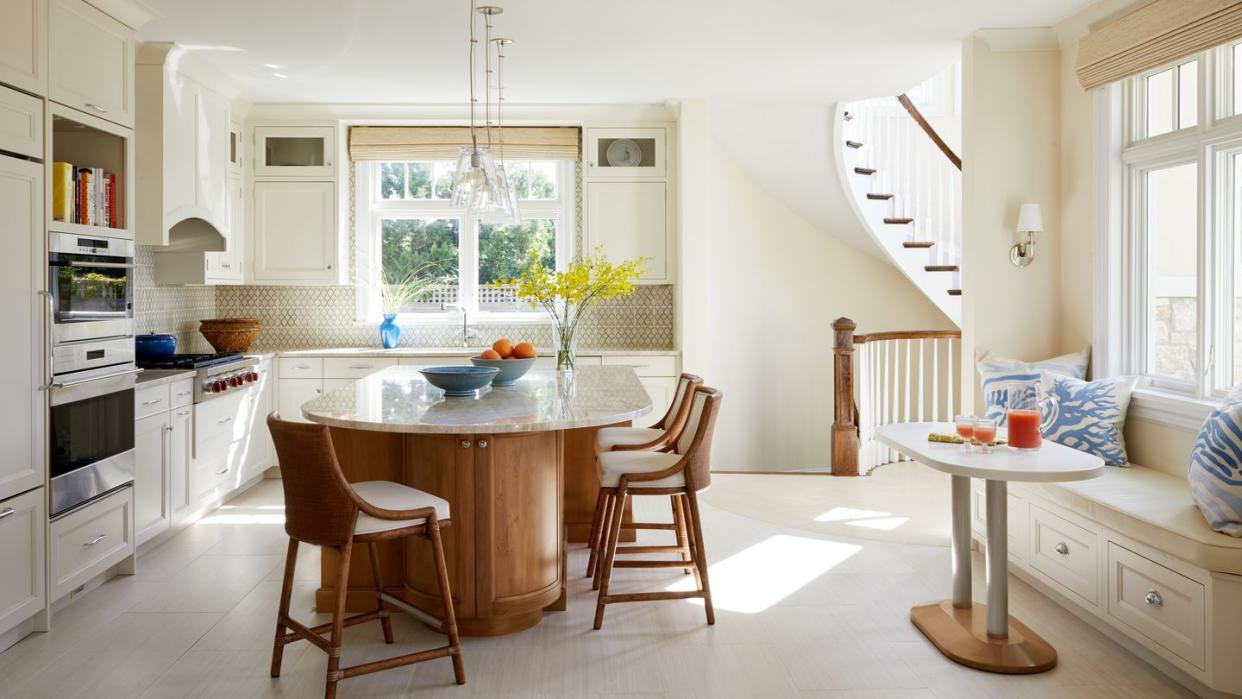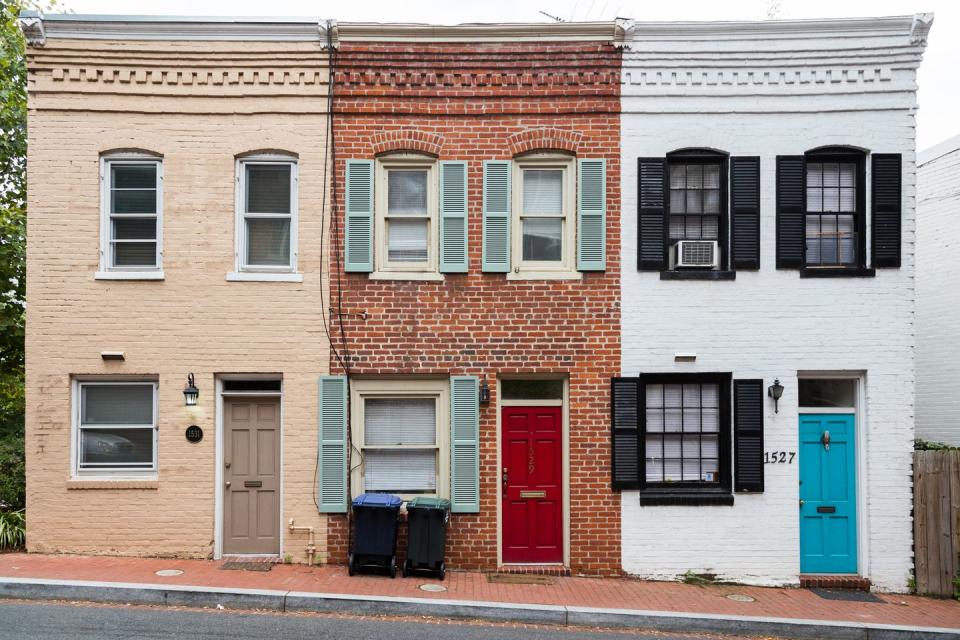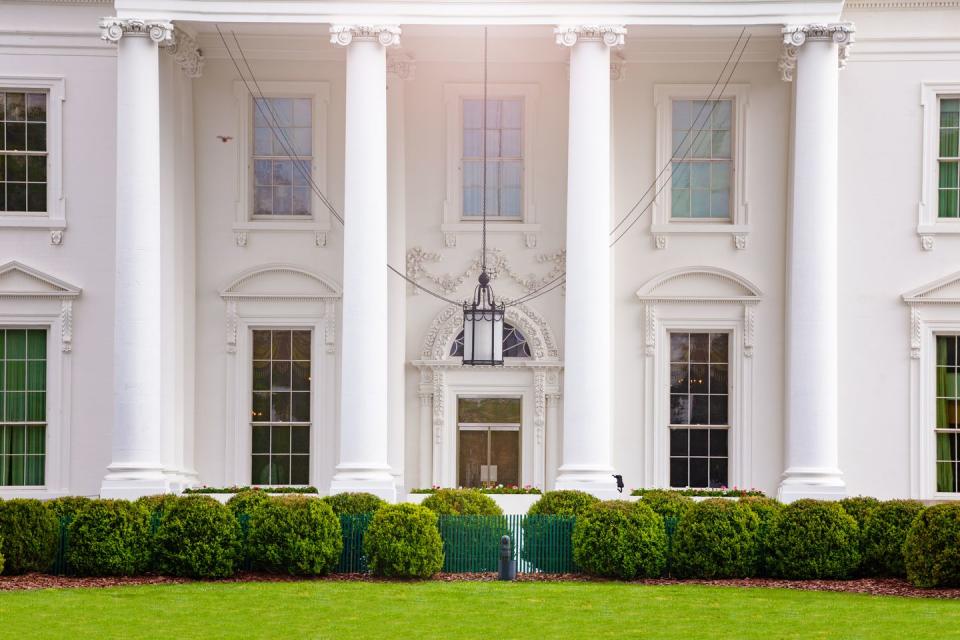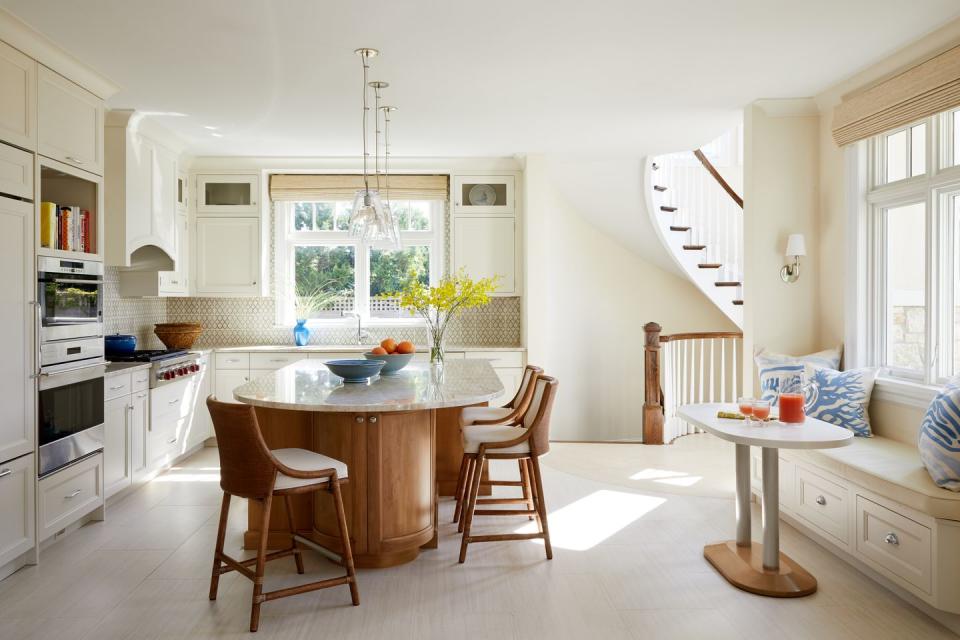This Design Element Instantly Brightens a Dark Room

"Hearst Magazines and Yahoo may earn commission or revenue on some items through these links."
[table-of-contents] stripped
At some point in your life, you've probably come across a transom window. They've been around for some seven centuries, after all—and they continue to be popular today. Once you figure out what a transom window is, we bet you'll start noticing them everywhere, from historic buildings to private homes to the sets of your favorite TV shows and movies (hint: you often see them in old office buildings and schools).
To learn about the history and modern uses of transom windows, we reached out to Washington, D.C.–based interior designer Catherine Ebert, Ashton Woods Homes residential architect Jay Kallos, and Justin Conzemius, vice president and general manager of windows at Andersen Corporation. Read on for a primer on the once essential and still beautiful and functional architectural feature.
What Are Transom Windows?
A transom window, or transom light, is a small window set above a larger window or a door, or, more specifically, above a transom, which is the horizontal beam above a door or window. (Yep, it's that simple.) The designs of transom windows can be quite elaborate since they're often used for decorative purposes; it's not uncommon for them to be made of leaded or stained glass. But as far as windows go, they're very functional too since they let additional light and, if they're not fixed, air into a room.
History of Transom Windows

"Transom windows first appeared around the 14th century," says Conzemius, whose company continues to make a variety of modern transom window styles today. "Notable periods of popularity include the Victorian era, when transom windows became more elaborate, often featuring decorative stained glass or intricate woodwork, as well as the Art Deco and Art Nouveau movements, which embraced transom windows for their decorative and geometric emphasis."
Numerous other design movements have favored transom windows too. Washington, D.C., is known for its row houses built in the Federal and Neoclassical architectural styles, which often feature transom windows. "Just think of the front door of the White House," Ebert says. "Those transom windows are often referred to as 'fanlights,' which are semi-circular or semi-elliptical windows over a doorway and are often used in conjunction with 'sidelights,' which are the narrow vertical windows on either side of an entry door."

Transom Windows Function
Like any window, transom windows allow natural light into a space. However, they differ from traditional windows in the privacy they provide since they're installed up high. You can close a door or draw curtains over a traditional window for privacy, but a transom window can remain unblocked to allow light in.
Transom windows aren't just found on exterior walls. They're frequently incorporated into interior space in older buildings—think about office buildings, schools, or even police precincts (like you might see on TV shows). In these cases, transom windows were often installed for ventilation purposes. "Before the advent of air-conditioning, transom windows were operated with a chain and a latch to vent the hotter upper air in a room and draw in fresher, cooler air," Kallos says. "They also allowed light to shine into interior spaces of a building, even when the door to a room with exterior windows was closed. Placed high over a door, they provided privacy while allowing air to flow throughout the building."
Modern Transom Window Styles

"Transoms are now prevalent in almost any architectural style and are almost always fixed. They can be half-round, rectangular, square, or trapezoidal," Kallos says. Beyond being decorative, there's also a convenience to them: "Transom windows are often part of a larger window package," Ebert explains. "They're a way to increase the size of the glass area while keeping the operable portions of the window wall in manageable or standard sizes."
Transom Window Cost
As with all things home improvement, the cost varies. The windows themselves can be as cheap as $100 for a simple model, but the price can go up dramatically for more decorative pieces—especially if they're custom. "The window itself is not the main driver of cost, and it really depends on your wall conditions," Ebert says. "Your general contractor can provide accurate pricing, but it will likely start around a few thousand dollars and go up from there. Adding an opening where you do not currently have one requires associated work with insulation, window trim, siding, woodwork, flashing, gutters, and any number of structural issues."
Transom Window Installation
"Installation of a transom window is exactly the same as that of a traditional window," Ebert says." If you have an existing framed opening or are just beginning your construction process, then it is simple. If you are trying to retrofit a transom over an existing window, it is much more involved and will depend largely on the structural conditions of the wall in question."
Working on a design project? Let us help!
Follow House Beautiful on Instagram and TikTok.
You Might Also Like

